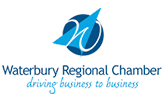
Technology has changed the face of education, although the basic principles of teaching have not changed. Many argue that technology has taken the place of the teacher in the classroom, or somehow made skilled educators less valuable. Teachers are still essential, but what technology has done is give educators new approaches and new tools to be more effective. However, technology is still only a tool, but skilled teachers who understand how to apply technology tools to best advantage will continue to change the face of education.
According to a study by PBS Learning Media, 75 percent of teachers say educational technology is linked to a number of benefits. Technology enables them to expand on lesson content (74 percent), better motivate students (74 percent), and respond to various learning styles (73 percent). A total of 69 percent of teachers surveyed said educational technology allows them to “do more than ever before” for students.
Technology Increases Engagement
Technology fuels classroom learning in various ways. First, consider how challenging it has become to engage students. In the world of smartphones and an “always on” culture, classroom education is competing for students’ attention. Children have become used to juggling multiple distractions simultaneously, so getting them to focus on a lesson or in-class instruction has become more challenging.That’s why more schools are adopting the same technologies that children use at home. Netbooks and tablet computers are gaining popularity in the classroom because they bring the same interface students use for home entertainment to education. The result is that students are more engaged and pay closer attention.
One of the appeals of using computers in the classroom is that they enable more interactive lessons. Students use their computing devices for self-instruction and to explore lessons in a new way. The technology interface also makes it more fun for students to learn.
Interactive whiteboards also help keep students more engaged, and promote collaboration. Computerized whiteboards provide the same kind of digital interface as a computer or tablet screen, but in a form that the whole classroom can share. Digital whiteboards are useful for multimedia lessons, collaborative problem solving, student presentations, virtual field trips, recorded lessons, and other applications.
The Worldwide Classroom
Once you make computers part of the classroom you can access new educational resources from anywhere. Teachers are increasingly using online curricula to supplement classroom instruction, as well as to create new lesson plans that include online destinations. For example, there are a variety of prepacked virtual field trips available from both commercial sources and non-profit sources. The Smithsonian, the Civil War Trust, the Louvre, the Museum of Natural History, and the White House all offer Web field trips, and Google’s Connected Classrooms has an ever-changing list of virtual field trips. And more schools are adopting digital and online textbooks, which have the advantage of being less expensive to produce and easier to keep current.Some schools are using technology for distance learning to help students in remote locations, or to access resources and experts that would otherwise be unavailable. The Web opens up a wide variety of new educational possibilities.
A stable network infrastructure forms the foundation for technology in the classroom. The school’s network system has to give students network access in the classroom, including access to online classroom resources.
Wireless networking is becoming the standard for classroom data access, which is why Chromebooks and netbooks are becoming more popular in the classroom. According to a report by The New York Times, 3.9 million Chromebooks were shipped to schools in 2014, an increase of 310 percent over the previous year. At the same time, iPad sales for education fell from 2.9 million units in 2013 to 2.7 million in 2014. What Chromebooks and iPads have in common is a dependence on wireless networking.
In the past, trying to connect an entire classroom to the same network infrastructure would have required cable-connected workstations. Today, new technologies such as the wireless 802.11ac standard can support an entire classroom over the same wireless connection.
Flipped Learning
Perhaps the biggest change that technology has brought to the classroom are opportunities for self-instruction. Flipped learning is growing in popularity.The idea behind flipped learning is simple. Rather than having students study at home and then review the same material in the classroom, students review the lesson material on their own, using class time to reinforce the lessons and address unanswered questions.
Flipped lessons can be stored and shared on the network or online for access in the classroom or at home using in-class netbooks or tablet or home computers. And lessons can extend beyond the prepared materials with additional digital sources and links to other online resources. Technology also makes it easier to track student progress with automated grading and analytics. It’s educational technology that makes the flipped classroom possible.
Progressive schools are finding new ways to harness technology and use computer systems as a foundation for the future. For technology in the classroom to be effective, every student needs to have his or her own means of accessing the Web and collaborating with other students. That means providing tools such as netbooks, tablets, and digital whiteboards, and a network infrastructure that is secure and has sufficient bandwidth to accommodate online lesson plans. Once the foundation is in place, instruction is only limited by the educators’ imagination.
Do you think schools can help improve the future of educational technology?







